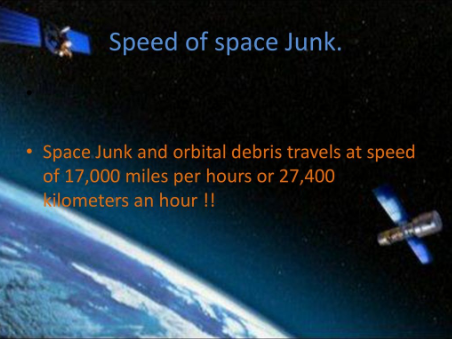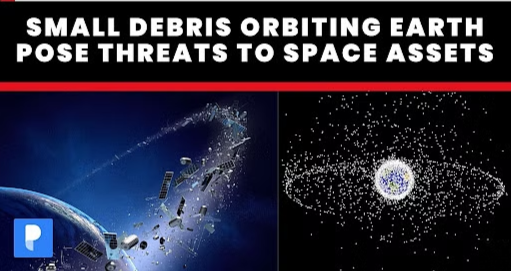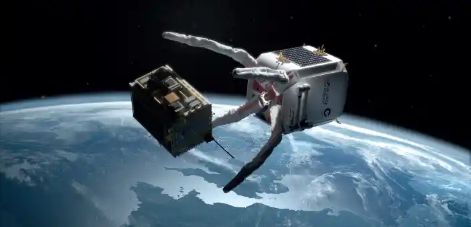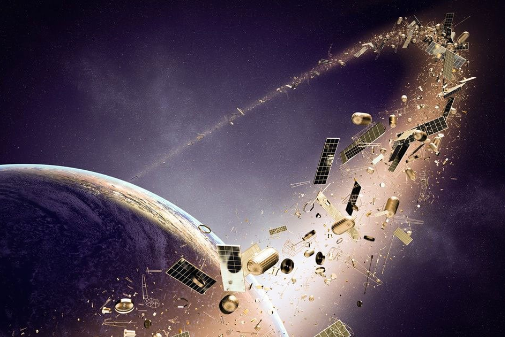Scientists’ immense efforts to explore mysterious space and fantasy to capture galaxies in one eye, undoubtedly uplifted the world with remarkable and vulnerable technology. Technology including, artificial Satellite, and AI, enable an individual to find out reliable ways to their destination, get weather forecast (help farmers to harvest crop), to get a picture of a specific region or person or things, transact money, estimate population density and many other real-time data that is required to get a quick understanding within no time.
But along with all these incredible advantages, non-operational satellites orbiting in the lower layer of the earth which are not being grabbed or dragged to the earth’s surface after completion of the mission established cosmic junk yards around the earth and pose unpredictable threats to future space missions in case of collisions. This junk yard or space debris also refers to the accumulation of dead or decommissioned satellites, broken fragments during a high-speed collision, remnants of space missions, pieces of machinery and spent upper stages of rockets or spacecraft.
This space debris or junk needs to be cleaned and carefully dragged onto the earth’s surface for earth life sustainability instead of letting this debris burn and re-enter with harmful chemicals and contribute towards global warming or climate change. In this blog, we will share content on the impact of space junk, historical perspective, tricks and tries to collect space junk, how space junk came into the picture and some estimated facts.
Orbit Congestion: How Does The Orbital Highway Change To A Debris Ring?
Over the last years more than 11,000 satellites have been launched into the Earth orbit and alone in 2020, almost 1283 satellites have been sent to lower orbit of the Earth. Out of these total satellites, even less than half are active or operational satellites and the rest are dead or flunct satellites that are still orbiting freely around the earth and are termed as space debris.
Space junk became a general menace in the 1960s when the US took the initiative to explore our vast cosmos and 1961 was marked as the year which faces disaster collision between space rocket debris and Cosmos 91 (soviet satellite, ASAT). This event left Earth with tons of small metallic fragments which played a crucial role in highlighting the term ‘space debris‘ to the general public.

Even after this in 1996, French satellites were struck by French rocket fragments and destruction occurred. Also, a commercial satellite, iridium 33 crashed and was damaged by an inactive communication satellite in Russia. Along with these many missions were continually conducted which accelerated and contributed to the density of space debris around the earth which is circulating at extremely high speed (17,000 miles per hour) and forming the debris ring. Not only incidentally but intentionally China launched anti-satellite (ASAT) missiles against defunct or inactive weather satellites in 2007 which significantly enhanced potential concern towards space debris, a pressing issue.
Does Space Debris Pose A Threat To International Space Station?
For the next few decays vast group of satellites, 42,000 or ‘Mega Constellation’ get planned by global giants such as space x, China, Amazon, Canada and many other organizations which will beam enormous internet to earth or for global Internet coverage. If this space mission is successful, 50 more satellites will be sent to space and collisions weave long chains or switch-on chain reactions in which more and more debris will produce as many as debris crisscross each other.
A higher concentration of space debris will prove a curse for future space missions as it could be a great hurdle for smooth launch or hinder it. Also, this cosmic junk is not in favour of active or operational satellite wandering along within the same debris ring and can have catastrophic consequences, exacerbated and cascading effects.

As per records 34,000 pieces of crashed satellites of size, 10 centimetres are floating in the earth’s lower orbit and countless smaller pieces. Out of these larger pieces even if smaller fragments come into the catch of the earth’s atmosphere, will burn out with potential projectile and fall or re-enter the earth, releasing many harmful chemicals and gases which result in drastic climate change.
These burning will also deplete the ozone layer and expose the world to harmful sun radiation, deadly cosmic rays, and solar winds and the earth will be at its dead end. Crowding of the earth with space junk or cosmic junk could disrupt vital services, provide improper navigation, loss of vulnerable scientific data such as weather forecasting and natural calamity.
Mitigating Efforts: Novel Solution For Sustainable Life
The first artificial satellite, Sputnik successfully launched in 1975 and currently, over 128 million objects, more significant than a millimetre orbiting the earth and collectively giving rise to a junkyard. These objects are travelling around at a speed of 17,000 miles per hour or 27,400 kilometres per hour and thus need to control their concentration.
To prevent the earth from dangerous consequences many concerted efforts, collaboration and several strategies are being made to mitigate the problem. The UN has ordered the companies to remove all satellites within the next 25 years anyhow but it’s tricky to enforce huge space debris. Some novel solutions are supposed to be considered shortly and these are
Debris Removal Mission
The Swiss startup mission is highly focused on grabbing garbage or space debris anyhow. One way is using harpoons and huge nets and other machinery that works on four arms to capture and hug the space-borne debris back into the earth’s surface smoothly, although this method is effective only for large-sized debris and is also very complicated. For small pieces, we can just wait for their natural entry.

Debris Avoidance Maneuvers (DAM)
Also called collision avoidance manoeuvres which allow agencies to avoid satellite damage on collision with space debris and thus generation of new cosmic junk will be at an end. But in this mission, removing pre-existing debris is not considered at all but just navigating to avoid a destructive collision.
Some Other Strategies
Some guidelines implemented by space stations taking part in the Summit at the London science museum such as developing debris-resistant materials, and improving tracking and monitoring systems to regulate space activities, to minimise the chain reaction of debris generation. Moribus cofounder of Privateer monitors space junk from time to time and collects information through equipment including telescopes and radars, physical sensors, and even news articles and turns it into usable data for sustainable development.
-ASHU RANI
Must Read: https://skchildrenfoundation.org/education-skcf/


